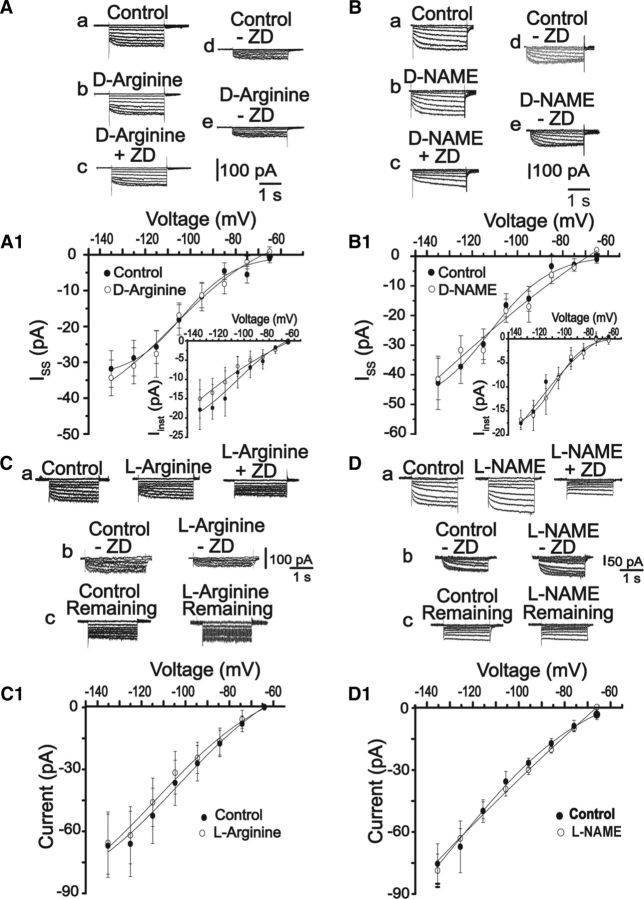Figure 4.
Inactive isomers do not affect Ih currents. A, B, Typical traces of instantaneous (Iinst) and steady-state (Iss) Ih currents under control condition (a), after 10 min of exposure to 500 μm d-arginine or 100 μm d-NAME (b), followed by 10 min exposure to ZD7288 30 μm (c). The currents, obtained by the subtraction method, are illustrated in d and e for each situation. A1, B1, The corresponding Iinst (insets) and Iss I–V relationships for each situation. No significant statistical differences were observed in the presence of the inactive isomer, d-arginine (Iinst = −17.5 ± 5 pA vs −15 ± 4 pA; Iss = −31.8 ± 5 pA vs −34.3 ± 5 pA, n = 6, at −135 mV, p > 0.05) or d-NAME (Iinst = −17 ± 0.9 pA vs 16.8 ± 2 pA; Iss = −42.7 ± 9 vs −41.4 ± 7, n = 7, at −135 mV, p > 0.05). C, D, Representative traces of the ZD7288-resistant current (remaining current) activated by voltage pulses as described before under the following conditions: control, ZD7288, ZD + 500 μm l-arginine, or 100 μm l-NAME. Cb, Db, The ZD-sensitive current (i.e., Ih). A second subtraction analysis was performed: Ca, Cb or Da, Db, to obtain a non–ZD-sensitive component, denoted here as remaining current (Cc, Dc). C1, D1, Average I–V relationships for the remaining currents in the control (open circles) and in the presence of l-arginine or l-NAME (filled circles), respectively. No differences were observed in the presence of l-arginine (−66 ± 15 pA vs −65 ± 15 pA, n = 6, p > 0.05 at −135 mV) or l-NAME (−78 ± 10 pA vs −82 ± 8 pA, n = 6, p > 0.05 at −135 mV). *p < 0.05 (paired Student's t test). **p < 0.005 (paired Student's t test). ***p < 0.001 (paired Student's t test).

